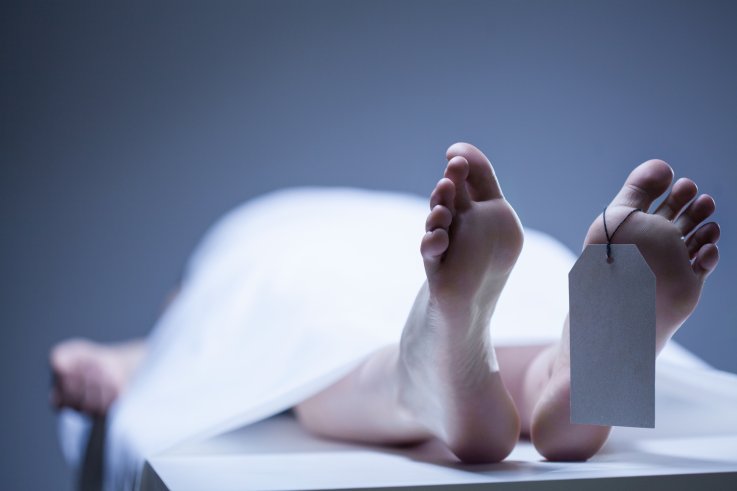HUMAN CORPSES KEEP MOVING FOR OVER A YEAR AFTER DEATH, SCIENTIST SAYS
Human corpses move around significantly as they decompose, according to an Australian researcher who observed a dead body over a 17-month period.
Australian researcher Alyson Wilson, the lead author of the study, found that the dead body moved for more than a year after death—findings which could have significant implications for post-mortem investigations, AFP reported.
Wilson suggests that the process of decomposition could be responsible for the movements: as the body mummifies, the ligaments dry out, causing parts to move.
“What we found was that the arms were significantly moving, so that arms that started off down beside the body ended up out to the side of the body,” Wilson told ABC News.
The findings come after Wilson filmed a donor body using a time-lapse camera at a “human body farm” known as the Australian Facility for Taphonomic Experimental Research (AFTER)—which lies in a secret location outside of Sydney, Australia. She filmed the corpse for 30-minute intervals over the 17-month study period.
AFTER is the only facility of its kind in the Southern Hemisphere. It is dedicated to the study of human remains from the time of death to the time of discovery, with the aim of casting new light on the process of human decomposition.
“Until we had AFTER, most of the science on how bodies decomposed was based on the Northern Hemisphere, where the climate is different, the weather is different and even the insects can be different,” Wilson told ABC.
The findings could help police to estimate the time of death of a body more accurately, according to Wilson. It could also help to improve judgements about the cause of death.
“They’ll map a crime scene, they’ll map the victim’s body position, they’ll map any physical evidence which is found, and they can understand the cause of death,” she told AFP.
“This research is very important to help law enforcement to solve crime and it also assists in disaster investigations,” Wilson told ABC. “It’s important for victims and victims’ families, and in a lot of cases it gives the victim a voice to tell their last story.”
Xanthé Mallett, a supervisor of Wilson’s research from the University of Newcastle, Australia, said that the findings could have important implications for criminal investigations, because it is usually assumed that bodies don’t move after death of their own accord (although they can be moved by animals or other people.)
“What isn’t known is that the body moves as part of the decomposition process and it’s the first time that it’s been captured, as far as I know,” Mallet told ABC. “I think people will be surprised at just how much movement there was, because I was amazed when I saw it, especially how much the arms were moving. It was astounding.”
Wilson’s latest findings are yet to be published in a peer-reviewed journal, however, experts in the field are certainly taking note of the research.
“I find this study very intriguing and look forward to reading more about it once additional research is conducted and published,” Lisa Dadio, a lecturer in forensic technology at the University of New Haven, who was not involved in the research, told Newsweek.
“From a crime scene investigation perspective in relation to the estimation on time of death, there are many factors that go into that estimation,” she said. “We rely on numerous aspects at the scene including but not limited to weather, temperature and whether the body is indoors or outdoors. From an investigative standpoint, we rely significantly on the autopsy results from the medical examiner or coroner, who are the experts in this process.”
Victor Weedn, a forensic expert from George Washington University, who was also not involved in the research, told Newsweek: “In this article the author seems to be talking about minor movements associated with other aspects of decomposition. I have had a case of body moving across a table due to maggot activity. Such may explain much of what the author observed.”
“Even without the insect activity, the body softens and comes loose and will shift with gravity and local pressures,” he said. “Microbial action may result in some movement. But all of this has been known, she may just be the first to systematically study it. Since these movements are small—her big example is that of the arms moving away from the trunk of the body—they are not likely to lead to errors in forensic investigations.”

Popayán Colombia https://www.pagina100.com
Fuente: / Source: www.newsweek.com


